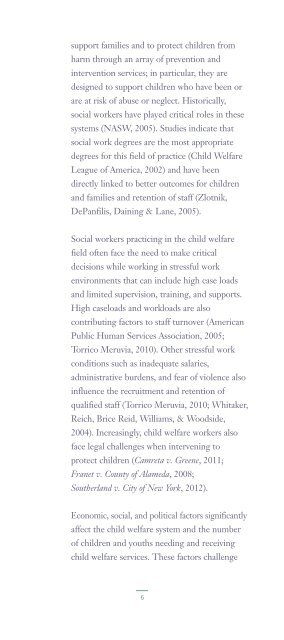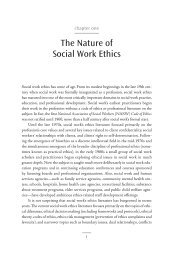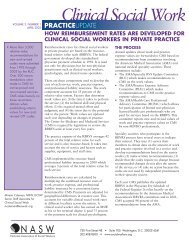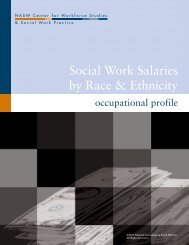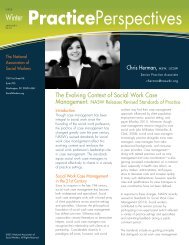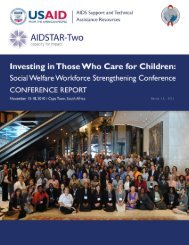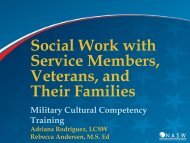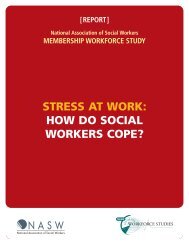Child Welfare - National Association of Social Workers
Child Welfare - National Association of Social Workers
Child Welfare - National Association of Social Workers
You also want an ePaper? Increase the reach of your titles
YUMPU automatically turns print PDFs into web optimized ePapers that Google loves.
support families and to protect children from<br />
harm through an array <strong>of</strong> prevention and<br />
intervention services; in particular, they are<br />
designed to support children who have been or<br />
are at risk <strong>of</strong> abuse or neglect. Historically,<br />
social workers have played critical roles in these<br />
systems (NASW, 2005). Studies indicate that<br />
social work degrees are the most appropriate<br />
degrees for this field <strong>of</strong> practice (<strong>Child</strong> <strong>Welfare</strong><br />
League <strong>of</strong> America, 2002) and have been<br />
directly linked to better outcomes for children<br />
and families and retention <strong>of</strong> staff (Zlotnik,<br />
DePanfilis, Daining & Lane, 2005).<br />
<strong>Social</strong> workers practicing in the child welfare<br />
field <strong>of</strong>ten face the need to make critical<br />
decisions while working in stressful work<br />
environments that can include high case loads<br />
and limited supervision, training, and supports.<br />
High caseloads and workloads are also<br />
contributing factors to staff turnover (American<br />
Public Human Services <strong>Association</strong>, 2005;<br />
Torrico Meruvia, 2010). Other stressful work<br />
conditions such as inadequate salaries,<br />
administrative burdens, and fear <strong>of</strong> violence also<br />
influence the recruitment and retention <strong>of</strong><br />
qualified staff (Torrico Meruvia, 2010; Whitaker,<br />
Reich, Brice Reid, Williams, & Woodside,<br />
2004). Increasingly, child welfare workers also<br />
face legal challenges when intervening to<br />
protect children (Camreta v. Greene, 2011;<br />
Franet v. County <strong>of</strong> Alameda, 2008;<br />
Southerland v. City <strong>of</strong> New York, 2012).<br />
Economic, social, and political factors significantly<br />
affect the child welfare system and the number<br />
<strong>of</strong> children and youths needing and receiving<br />
child welfare services. These factors challenge<br />
6


